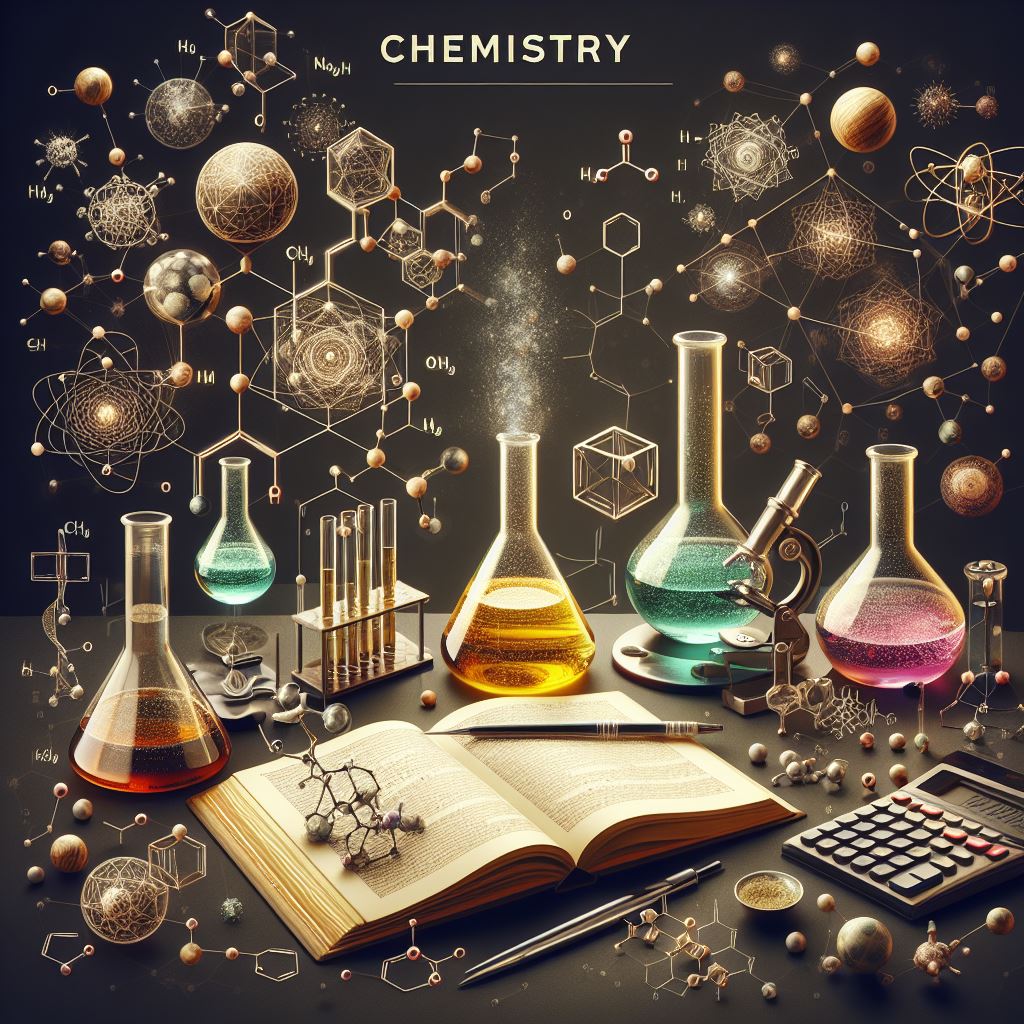Chemistry Key Terms

Introduction
Chemistry is the scientific discipline that studies the properties, composition, structure, and changes of matter. It explores the interactions and transformations of substances at the molecular and atomic levels. Chemistry is often referred to as the central science because it connects and bridges other natural sciences like physics, biology, and environmental science. The primary goals of chemistry include understanding the behavior of matter, explaining the principles governing its changes, and using this knowledge to create new materials and processes for various practical applications.
accuracy: how closely a measurement aligns with a correct value
atom: smallest particle of an element that can enter into a chemical combination
Celsius (°C): unit of temperature; water freezes at 0 °C and boils at 100 °C on this scale
chemical change: change producing a different kind of matter from the original kind of matter
chemical property: behavior that is related to the change of one kind of matter into another kind of matter
chemistry: study of the composition, properties, and interactions of matter
compound:pure substance that can be decomposed into two or more elements
cubic centimeter (cm3 or cc):volume of a cube with an edge length of exactly 1 cm
cubic meter (m3):SI unit of volume
density: ratio of mass to volume for a substance or object
dimensional analysis:(also, factor-label method) versatile mathematical approach that can be applied to computations ranging from simple unit conversions to more complex, multi-step calculations involving several different quantities
element: substance that is composed of a single type of atom; a substance that cannot be decomposed by a chemical change
exact number: number derived by counting or by definition
extensive property: property of a substance that depends on the amount of the substance
Fahrenheit: unit of temperature; water freezes at 32 °F and boils at 212 °F on this scale
gas: state in which matter has neither definite volume nor shape
heterogeneous mixture: combination of substances with a composition that varies from point to point
homogeneous mixture: (also, solution) combination of substances with a composition that is uniform throughout
hypothesis: tentative explanation of observations that acts as a guide for gathering and checking information
intensive property: property of a substance that is independent of the amount of the substance
kelvin (K): SI unit of temperature; 273.15 K = 0 ºC
kilogram (kg): standard SI unit of mass
law: statement that summarizes a vast number of experimental observations, and describes or predicts some aspect of the natural world
law of conservation of matter: when matter converts from one type to another or changes form, there is no detectable change in the total amount of matter present
length: measure of one dimension of an object
liquid: state of matter that has a definite volume but indefinite shape
liter (L): (also, cubic decimeter) unit of volume; 1 L = 1,000 cm3
macroscopic domain: realm of everyday things that are large enough to sense directly by human sight and touch
mass: fundamental property indicating amount of matter
matter: anything that occupies space and has mass
meter (m): standard metric and SI unit of length; 1 m = approximately 1.094 yards
microscopic domain: realm of things that are much too small to be sensed directly
milliliter (mL): 1/1,000 of a liter; equal to 1 cm3
mixture: matter that can be separated into its components by physical means
molecule: bonded collection of two or more atoms of the same or different elements
physical change: change in the state or properties of matter that does not involve a change in its chemical composition
physical property: characteristic of matter that is not associated with any change in its chemical composition
plasma: gaseous state of matter containing a large number of electrically charged atoms and/or molecules
precision: how closely a measurement matches the same measurement when repeated
pure substance: homogeneous substance that has a constant composition
rounding: procedure used to ensure that calculated results properly reflect the uncertainty in the measurements used in the calculation
scientific method: path of discovery that leads from question and observation to law or hypothesis to theory, combined with experimental verification of the hypothesis and any necessary modification of the theory
second (s): SI unit of time
SI units (International System of Units): standards fixed by international agreement in the International System of Units (Le Système International d’Unités)
significant figures: (also, significant digits) all of the measured digits in a determination, including the uncertain last digit
solid: state of matter that is rigid, has a definite shape, and has a fairly constant volume
symbolic domain: specialized language used to represent components of the macroscopic and microscopic domains, such as chemical symbols, chemical formulas, chemical equations, graphs, drawings, and calculations
temperature: intensive property representing the hotness or coldness of matter
theory: well-substantiated, comprehensive, testable explanation of a particular aspect of nature
uncertainty: estimate of amount by which measurement differs from true value
unit: standard of comparison for measurements
unit conversion factor: ratio of equivalent quantities expressed with different units; used to convert from one unit to a different unit
volume: amount of space occupied by an object
weight: force that gravity exerts on an object














